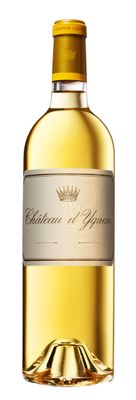Buying options
Tasting notes
This is a stunner.Mandarin, apricot, muscat grape, marker per (botrytis). Sweet and complex with vibrant acidity. Keeps coming and coming. Very very fine indeed - beautifully assembled!
Critic scores
Average Score
Jeannie Cho Lee MW
Ivor Davies
More reviews and scores
Served from an ex-chateau bottle. Consistent notes compared to the sample tasted blind at Southwold, the 2010 Chateau d’Yquem does not quite live up to the billing it showed out of barrel. Certainly it does not possess the concentration of the 2011, the elegance or the symmetry. However, there is fine minerality on the nose and great transparency. The palate is fresh and harmonious, with a fine bead of citrus fruit and a penetrating, spicy finish that offers white peach and honeysuckle notes, yet does not possess anything close to the peacock’s tail of the magnificent 2009. Still, this is a fine Yquem.
Intensely aromatic, with honeysuckle, marmalade, and candied citrus notes, the 2010 Yquem is a wine of amazing freshness and vibrancy of flavour, with layers of sweet flowers and ripe stone fruits, and great substance and depth. More of a middleweight than the 2009, the 2010 Yquem weighed in at 140 g/l of residual sugar versus 155g/l in the 2009. Jeannie Cho Lee MW asianpalate.com
The best known Sauternes château always makes less than a thousand bottles, very little in relation to its hundred or more hectares (247 acres). Normal threats of damp weather and too much fungus were reversed in 2010, in a drought with cool nights, but underlying water provided growth. From a fine, very pale gold with transparent meniscus in the glass, a respiration of pure honey, polished cedar, cut grass, almond and orange blossom is provided in a single gentle intake. The palate receives a positive acidity, enveloping flavours of peach, banana, vanilla and pale cherries. Ivor Davies
About the producer

The undisputed finest sweet wine in the world, Château d'Yquem is the only Premier Cru Supérieur estate in Sauternes, classified in 1855. With a long history stretching back to the Middle Ages, the château is entwined with that of the Lur-Saluces family – who remain involved today.
